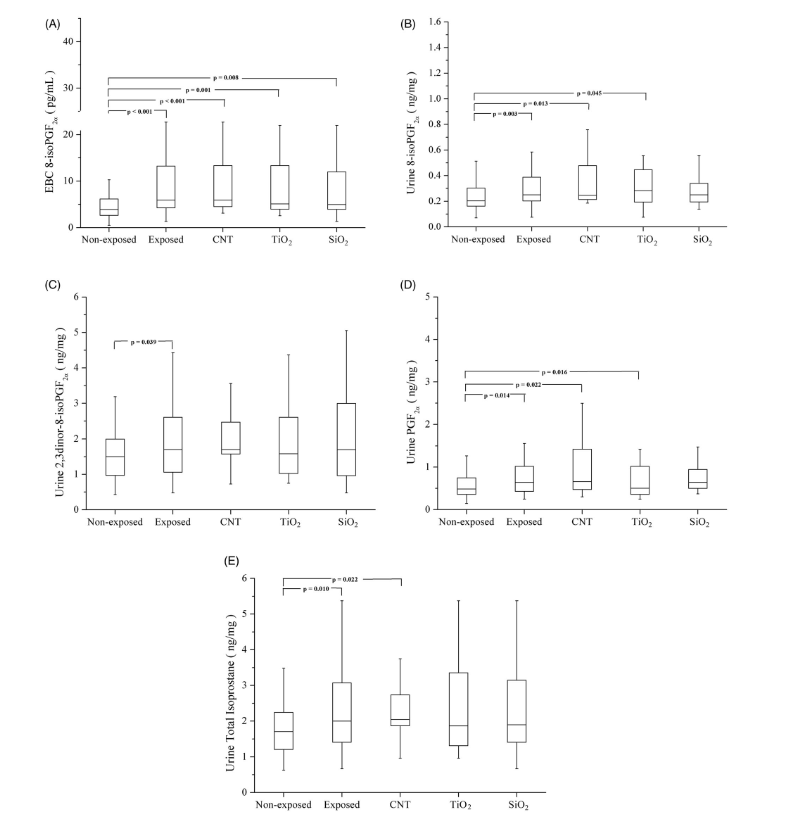Featured Scientist
Author published in "Nanotoxicology" affiliate to
College of Science and Engineering
Hui-Ling Lee
Department of Chemistry, Fu Jen Catholic University,
New Taipei City, Taiwan
Article published in
"INanotoxicology" 2021, 15, 5, 577-587
Lipid peroxidation metabolites associated with biomarkers of inflammation and oxidation stress in workers handling carbon nanotubes and metal oxide nanoparticles
The purpose of this study was to assess the effects of lipid peroxidation with occupational exposure to different types of nanomaterials (NMs). In this cross-sectional study, urine and exhaled breath condensate (EBC) samples were collected from 80 NM-handling workers [30 workers handling nano-titanium oxide (nano-TiO2), 28 handling nano-silicon dioxide (nano-SiO2), 22 handling carbon nanotubes (CNTs)], and 69 controls (office workers) from 2010 to 2012. Urinary 8-isoPGF2α, 2,3 dinor-8-isoPGF2α, PGF2α, and EBC 8-iso PGF2α were measured as lipid peroxidation biomarkers in 2013. A significant positive correlation was found between 8-isoPGF2α, 2,3 dinor-8-isoPGF2α, PGF2α, and total isoprostane in urine. Furthermore, significant positive correlations were noted between EBC 8-iso PGF2α and urinary 2,3 dinor-8-isoPGF2α (Spearman correlation r = 0.173, p = 0.035). Exposure to nano-TiO2 resulted in significantly higher levels of urinary 8-isoPGF2α, 2,3 dinor-8-isoPGF2α and PGF2α, even after controlling for confounding factors. Moreover, significant associations and exposure intensity–response relationships between EBC 8-iso PGF2α and NMs were observed in workers, whether handling nano-TiO2, nano-SiO2, or CNTs. Among them, the significant trends were identified based on the intensity of risk levels. These results provided evidence that exposure to nano-TiO2, nano-SiO2, and CNTs may lead to lipid peroxidation in EBC. For routine biomonitoring purposes, this finding, which came through noninvasive methods, may be useful for workers exposed to NMs. [Link to this article...]

KEYWORDS Carbon nanotubes; metal oxide nanomaterials; 8-isoprostaglandin F2a; biomarkers; LC-MS/MS
45 views